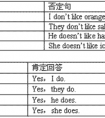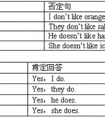判断下列句中介词用得是否正确,正确的打“√”,错误的打“×”,并将错的改正过来。( )1、It'stimetolunch.( )2、It'shotoutside.Pleaseputonyour coat. ( )3、Howwiththis-六年级英语
题文
| 判断下列句中介词用得是否正确,正确的打“√”,错误的打“×”,并将错的改正过来。 |
| ( )1、It's time to lunch. ( )2、It's hot outside. Please put on your coat. ( )3、How with this skirt ? ( )4、Who's at duty today ? ( )5、My father's birthday is at the l st of June. ( )6、On the street, there are many cars. ( )7、I can see lots with trees. ( )8、Do you like to play on a yo-yo ? ( )9、There is a park in the theatre. ( )10、In your right, I can see two boys. ( )11、The girl in white is my student. ( )12、I can see some boys in the bus stop. ( )13、Can you write an e-mail with English ? ( )14、Who are you talking in ? ( )15、Would you like to read the new words for us ? ( )16、Here's a birthday cake to you. ( )17、What can I do to you ? ( )18、The monkey in a long tail is very lovely. ( )19、What are you good in ? ( )20、You can get down at the first stop. |
答案
| 1、× for 2、× take off 3、× about 4、× on 5、× on 6、× In 7、× of 8、× with 9、× near 10、× On 11、√ 12、× at 13、× in 14、× with 15、√ 16、× for 17、× for 18、× with 19、× at 20、× off |
据专家权威分析,试题“判断下列句中介词用得是否正确,正确的打“√”,错误的打“×”,并将..”主要考查你对 介词 等考点的理解。关于这些考点的“档案”如下:
介词
考点名称:介词
- 介词:
是用来表示它后面的名词(代词)或起名词作用的短语、从句与句中其他成分之间的关系。
介词是英语中很活跃的词,一般置于名词之前。它常和名词或名词性词语构成介词短语。
同一个介词常和不同的词语搭配形成固定搭配,表示不同意义。 介词分类:
一、表示地点位置的介词
(1)at, in, on, to, for
at 表示在小地方;表示“在……附近,旁边”。
in 表示在大地方;表示“在……范围之内”。
on 表示毗邻,接壤,“在……上面”。
to 表示在……范围外,不强调是否接壤;或“到……”。
(2)above, over, on 在……上
above 指在……上方,不强调是否垂直,与below相对;
- 最新内容
- 相关内容
- 网友推荐
- 图文推荐
上一篇:选用in,on,from,for,to填空。A.Hi,Dick!Whereareyou?B.Happybirthday you.C.What'sthisEnglish?D.Where'smybook?thebed.E.Thisisanorange.It'syou.-六年级英语
下一篇:用适当的介词填空。1、Wouldyouliketotellmesomething yourMathsteacher ?2、Youlookyourfather.3、ImetMrZhaugthepostoffice.4、Look,theyarelookingtheblackboardcaref-六年级英语
零零教育社区:论坛热帖子
| [家长教育] 孩子为什么会和父母感情疏离? (2019-07-14) |
| [教师分享] 给远方姐姐的一封信 (2018-11-07) |
| [教师分享] 伸缩门 (2018-11-07) |
| [教师分享] 回家乡 (2018-11-07) |
| [教师分享] 是风味也是人间 (2018-11-07) |
| [教师分享] 一句格言的启示 (2018-11-07) |
| [教师分享] 无规矩不成方圆 (2018-11-07) |
| [教师分享] 第十届全国教育名家论坛有感(二) (2018-11-07) |
| [教师分享] 贪玩的小狗 (2018-11-07) |
| [教师分享] 未命名文章 (2018-11-07) |


![Where is my bag? It's _____________the desk. [ ]A. inB. behindC. on-五年级英语](http://www.00-edu.com/d/file/ks/4/1/44/2019-08-20/small3591750882d019139d20d416cb80f64f1566236486.jpg)
![Where's my pen? [ ]A. It's in the desk.B. It's under the desk.C. It's on the desk.-四年级英语](http://www.00-edu.com/d/file/ks/4/1/44/2019-08-20/small4157828d9d6bc1a02bdbdd4d3ffccde61566236790.jpg)

![I can call you _____________ the phone.[ ]A. inB. atC. onD. of-六年级英语](http://www.00-edu.com/d/file/ks/4/1/44/2019-08-20/small17adfe158040ebb20380cac1c81e7ec81566232881.jpg)
